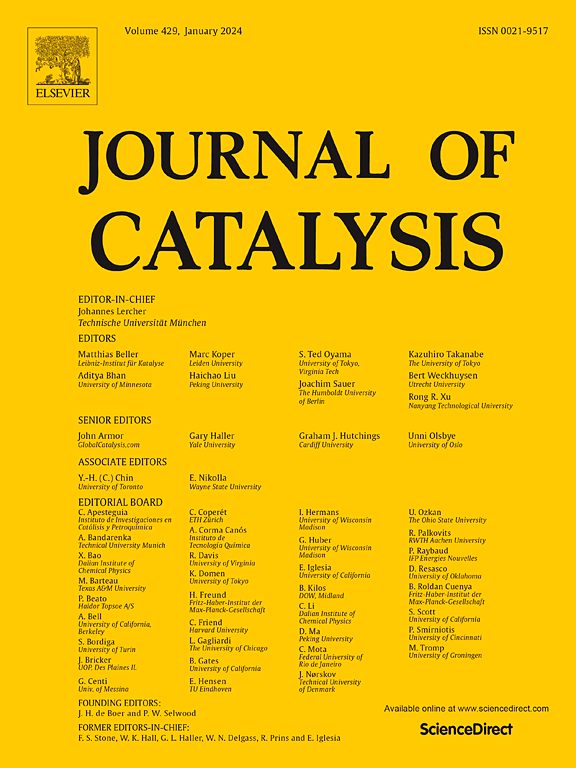Immobilization and practical photoredox processes with dithienoquinoxaline
IF 6.5
1区 化学
Q2 CHEMISTRY, PHYSICAL
引用次数: 0
Abstract
A novel organic dithienoquinoxaline photoredox catalyst has been immobilized through a straightforward co-polymerization approach. The performed heterogenization did not alter fundamental thermal, electrochemical, and optical properties and, most importantly, the ability of the excited catalyst to act either as a one-electron reductant or oxidant using a single light source (∼450 nm). The oxidation power of the triplet excited state of both homogeneous and heterogeneous photocatalysts has been demonstrated in the oxidation of sulphides, amines, and alcohols. The photoreduction of nitroaromatics and ketones has been accomplished by utilizing (double-excited) dithienoquinoxaline radical anion. Both oxidation and reduction reactions were accomplished either in batch (homo/heterogeneous) or under continuous-flow conditions using a porous flexible monolithic column with immobilized catalyst. Repetitive cyclic oxidation/reduction of pharmaceutically and industrially important fluorenol/one system along with a consecutive nitro reduction and sulphur oxidation in bis(4-nitrophenyl)sulphide towards an antimalarial agent further demonstrates the wide applicability of the developed catalytic systems/protocols. The recyclability and eventual structural changes of the immobilized catalyst have been addressed through FT-IR spectra and TON/TOF values.

二噻吩喹啉的固定化及实际光氧化还原过程
采用直接共聚合的方法固定化了一种新型有机二噻吩喹啉光氧化还原催化剂。所进行的异质化没有改变基本的热、电化学和光学性质,最重要的是,激发的催化剂使用单一光源(~ 450 nm)作为单电子还原剂或氧化剂的能力。均相和非均相光催化剂的三重态激发态的氧化能力已经在硫化物、胺和醇的氧化中得到了证明。利用(双激发)二噻吩喹啉自由基阴离子实现了硝基芳烃和酮类化合物的光还原。氧化和还原反应既可以在间歇(同质/多相)条件下完成,也可以在固定化催化剂的多孔柔性整体柱上连续流动条件下完成。在医药上和工业上具有重要意义的芴醇/一体系的重复循环氧化/还原,以及双(4-硝基苯)硫化物的连续硝基还原和硫氧化,进一步证明了所开发的催化体系/方案的广泛适用性。通过FT-IR光谱和TON/TOF值分析了固定化催化剂的可回收性和最终结构变化。
本文章由计算机程序翻译,如有差异,请以英文原文为准。
求助全文
约1分钟内获得全文
求助全文
来源期刊

Journal of Catalysis
工程技术-工程:化工
CiteScore
12.30
自引率
5.50%
发文量
447
审稿时长
31 days
期刊介绍:
The Journal of Catalysis publishes scholarly articles on both heterogeneous and homogeneous catalysis, covering a wide range of chemical transformations. These include various types of catalysis, such as those mediated by photons, plasmons, and electrons. The focus of the studies is to understand the relationship between catalytic function and the underlying chemical properties of surfaces and metal complexes.
The articles in the journal offer innovative concepts and explore the synthesis and kinetics of inorganic solids and homogeneous complexes. Furthermore, they discuss spectroscopic techniques for characterizing catalysts, investigate the interaction of probes and reacting species with catalysts, and employ theoretical methods.
The research presented in the journal should have direct relevance to the field of catalytic processes, addressing either fundamental aspects or applications of catalysis.
 求助内容:
求助内容: 应助结果提醒方式:
应助结果提醒方式:


